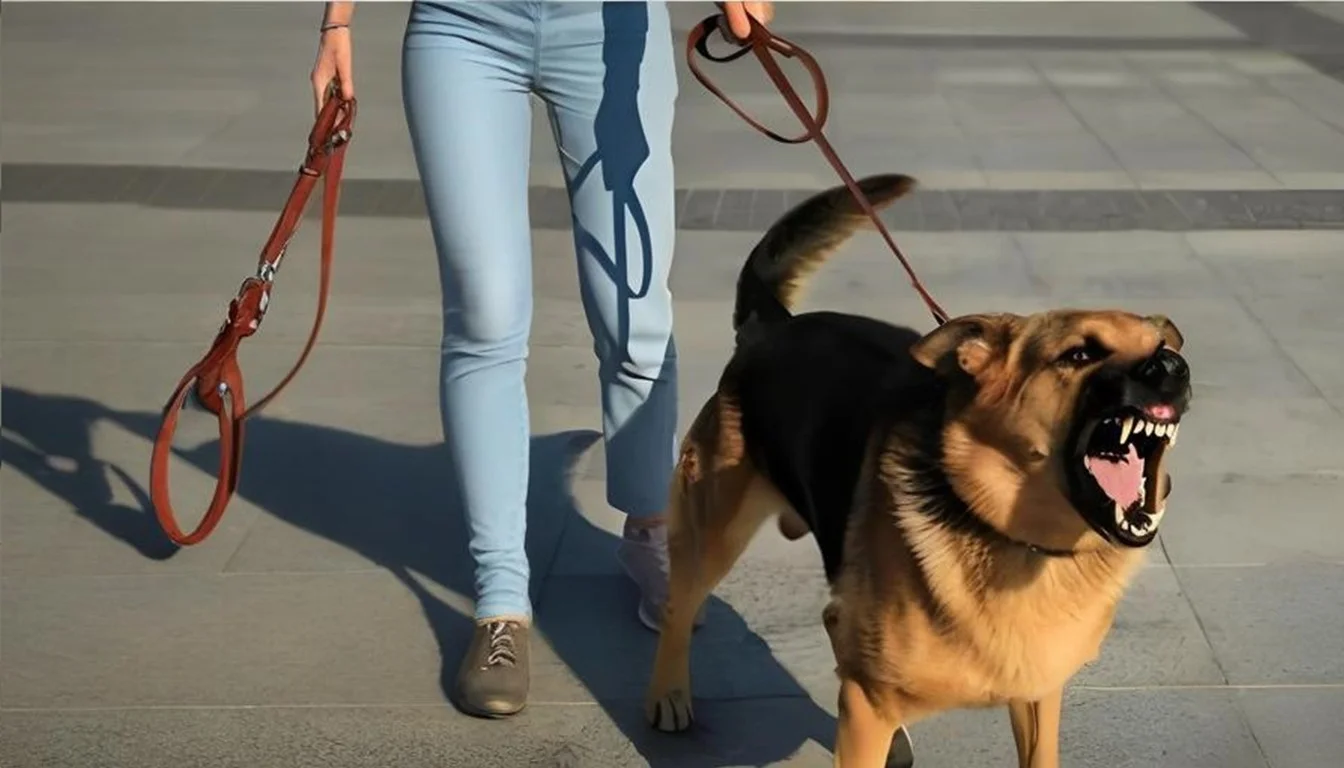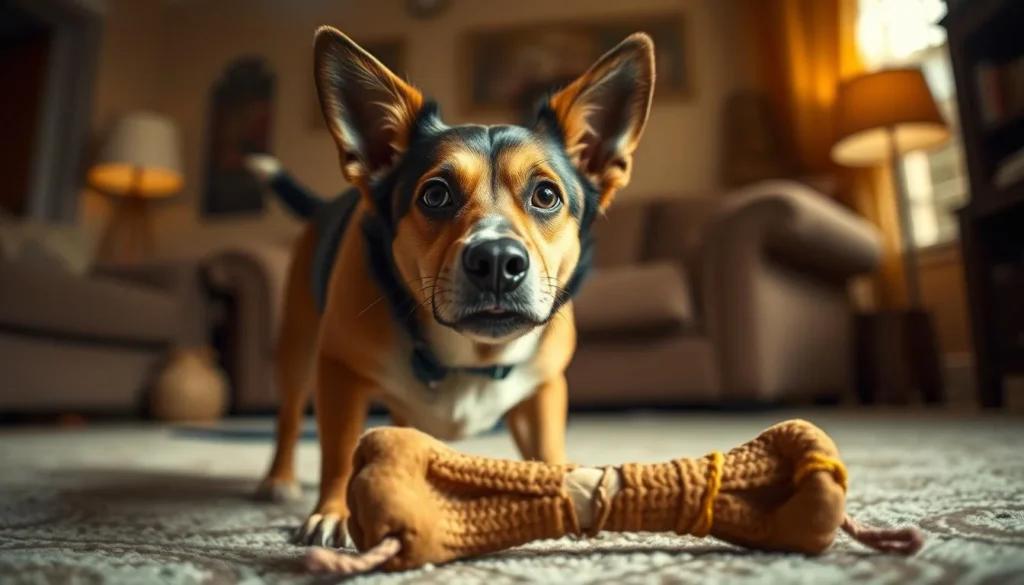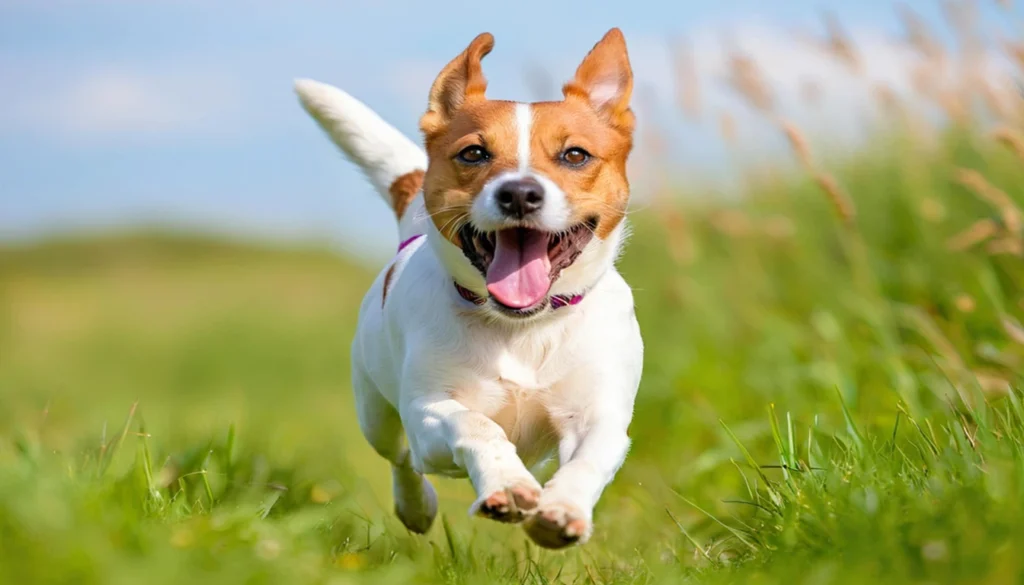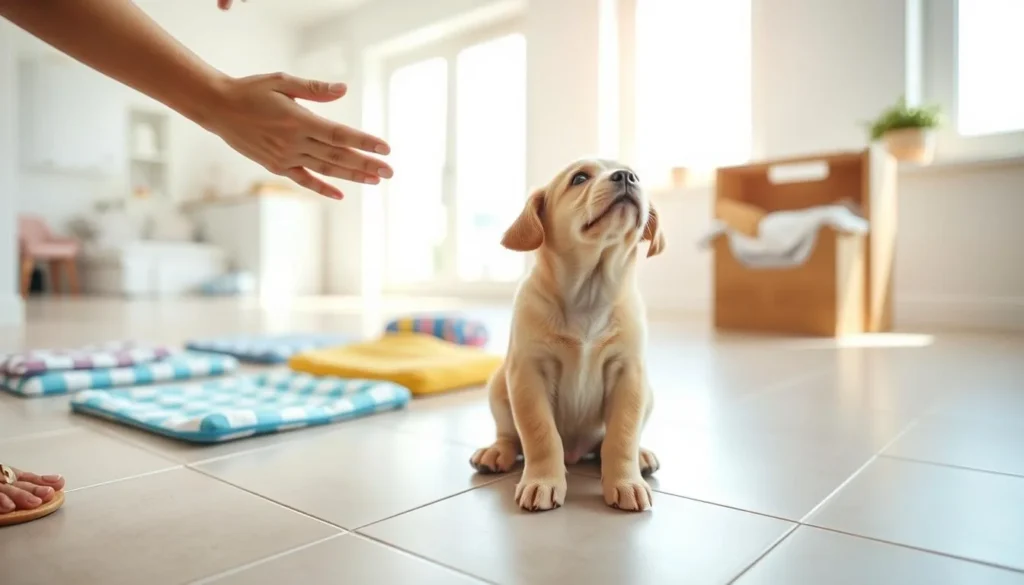I remember the first time my neighbor's Labrador acted aggressively. It was a scary moment. This taught me that dog aggression can happen quickly. It includes behaviors like barking, growling, and biting.
It starts with warning signs that we often miss. I've learned a lot about dealing with aggressive dogs since then. I've worked with trainers and veterinarians to find safe ways to handle these situations.
My goal is to help you understand how to manage dog aggression. I want to teach you how to reduce risks and use effective training methods. This way, problems can get better without getting worse.
Key Takeaways
- Dog aggression covers a range of behaviors from warning signals to biting and is a leading reason owners seek help.
- Immediate prevention is critical: stopping further episodes reduces reinforcement of aggressive responses.
- Practical management tools—leashes, crates, muzzles, and head halters—keep people and pets safe while training progresses.
- Evidence-based approaches like desensitization and counterconditioning form the backbone of effective dog aggression training.
- Seek help from a veterinarian, certified trainer, or veterinary behaviorist when aggression is frequent, escalating, or linked to health issues.
Understanding Dog Aggression: What It Really Means
I help owners understand dog aggression to keep families safe. It's important to know the difference between warning signs and true aggression. This knowledge guides how we react and what steps to take next.
Defining aggression vs. warning signals
Behaviors like barking, showing teeth, and growling are often just warnings. I teach clients to understand the context and intent behind these actions. This way, a temporary warning isn't confused with a permanent aggressive trait.
Misjudging a dog's behavior can lead to sad outcomes like surrender or euthanasia. So, it's crucial to accurately interpret what a dog is trying to say.
Common behavioral sequence leading to bites
Dogs often follow a pattern before biting. They might freeze, bark, lunge, mouth, push, show teeth, snarl, snap, and then bite. Not all dogs go through all these steps.
Also, the time between a warning and a bite can be very short. This is why it's easy to miss the signs.
Why accurate diagnosis matters for treatment
I categorize aggressive behavior in dogs based on its function. This helps me understand what drives the dog and what treatment will work best.
Getting the diagnosis right reduces risks and prevents harmful treatments. It points us in the right direction, whether it's behavior modification, changing the environment, medical checks, or seeking a vet behaviorist. The right approach, like desensitization and counterconditioning, depends on a correct diagnosis.
- Observe context: note who is present, prior triggers, and timing.
- Record sequences: short videos and notes help identify escalation.
- Seek expertise: a veterinary behaviorist or certified trainer refines diagnosis and outlines how to manage dog aggression safely.
Types of Aggression and How They Differ
I explain several common aggression patterns to help you spot triggers and respond correctly. Knowing the types of dog aggression is key for setting realistic training goals and ensuring safety. I focus on real signs, when aggression starts, and how it affects owners.
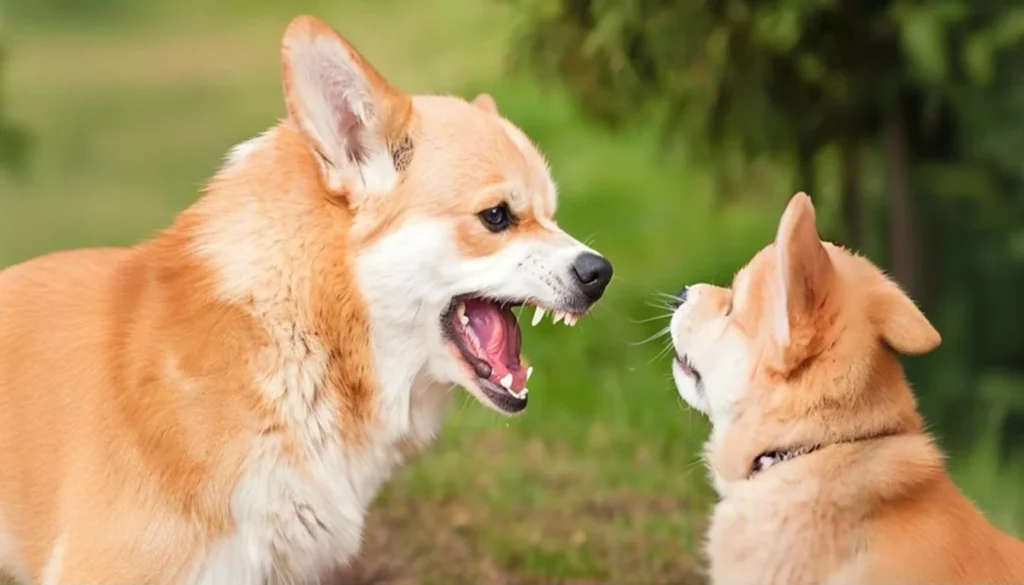
Fear-based aggression and defensive responses
Fear-based aggression happens when a dog wants to get away. If it can't, it might snap or bite to create space. Look for signs like avoiding, tucked posture, and wide eyes before any aggression.
Defensive aggression is similar but the dog attacks to protect itself. Treatment aims to lower fear and provide escape routes.
Territorial and protective aggression explained
Territorial aggression occurs when strangers enter a dog's space, like the yard or front door. Protective aggression targets threats to family or pack members.
These types often start between one and three years old. Management includes training, controlled exposure, and clear rules for visitors.
Possessive/resource guarding and intra-household aggression
Resource guarding is about defending food, toys, beds, or attention. It can start in puppies and last into adulthood. I use trade games and supervised exchanges to reduce this behavior.
Intra-household aggression happens when dogs fight over status or resources. Safe separation and stepwise reintroduction often work. I recommend structured routines and equal access to valued items to lower tension.
Predatory, idiopathic, and sex-related aggression
Predatory aggression is driven by chase and capture instincts. It often shows little warning and targets animals, not people. I treat this differently from conflict aggression in dogs because the motive is hunting, not social contest.
Idiopathic aggression lacks a clear trigger and may come from neurological or medical issues. Veterinary evaluation is essential when I cannot link behavior to a setting or stimulus.
Sex-related aggression appears in intact animals competing for mates. Neutering or spaying can reduce it, but behavior modification is still important for long-term change.
I stress that knowing the type of aggression is crucial. Correctly identifying whether you face conflict aggression in dogs, resource guarding, predatory aggression, or dog aggression towards other dogs guides safe management and improves prognosis.
Recognizing Signs of Dog Aggression
I keep a close eye on dogs to spot aggression signs early. Small changes in how they stand or sound are key. These signals help owners act fast and keep everyone safe.
Body language: stiffening, snarling, and gaze
Aggression in dogs often starts with small changes in body language. A dog might freeze, stiffen, or stare intensely. They may also show teeth or snarl.
Posture can change too. Dogs may lean forward if they're aggressive or cower if they're scared. Spotting these signs early can help change the situation.
Vocal cues: growls, guttural barks, and snarls
Dogs use growls, barks, and snarls to warn before they act. Some dogs don't make sounds and go straight to biting. So, I watch both body language and sounds to understand the risk.
Behavioral cues: lunging, snapping, and bite escalation
Behavioral cues can quickly turn from lunging to biting. A dog might start with quick nips, then move to deeper bites. Owners might feel surprised by a bite, but there were usually signs.
Pain, illness, or past aggression can change a dog's behavior. Any sudden change should lead to a vet visit.
Assessing Who the Dog Is Aggressive Toward
I start by mapping who is targeted and when. Knowing whether a dog shows aggression toward strangers, family members, or other pets guides safe management and treatment. A clear log of incidents helps me spot patterns and rule out medical causes.
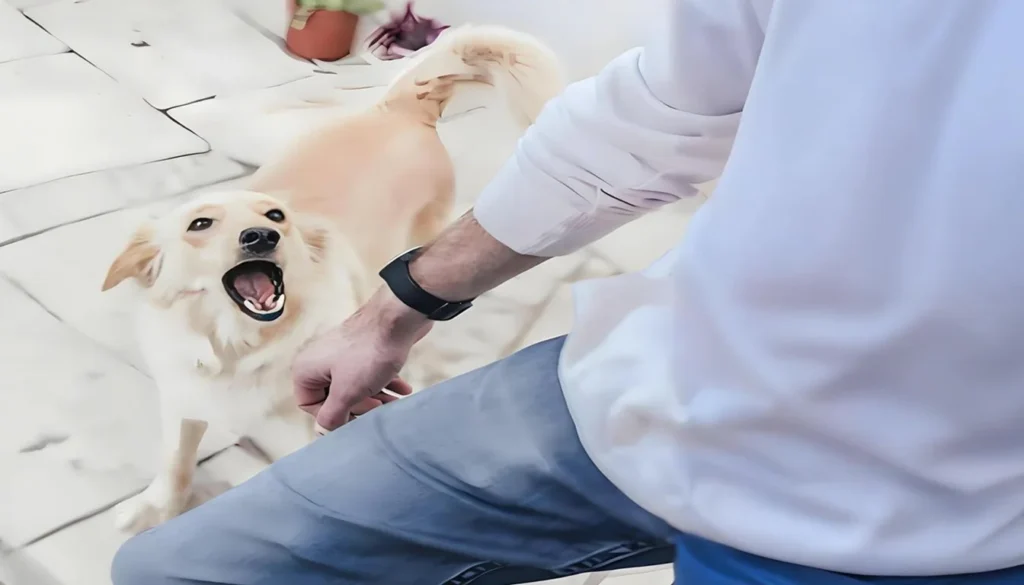
Aggression toward strangers vs. family members
A dog that barks, lunges, or snaps at visitors may show aggression toward strangers as a protective or fear response. This pattern is common and often tied to lack of exposure or strong territorial instincts. I treat these cases with controlled socialization and predictable routines.
When the target is a household member, the issue is more complex. Dog aggression towards family carries higher risk, especially if children are involved. These cases can stem from pain, resource guarding, or an unclear social hierarchy. I prioritize safety plans and a veterinary check before behavior work.
Aggression toward other dogs or household pets
Dog aggression towards other dogs is often an independent pattern. A dog can be friendly with people yet reactive to other dogs on leash or at home. In multi-dog homes, intra-household conflicts usually involve status disputes and require careful separation and supervised reintroduction.
Training for dog-directed aggression focuses on distance management and clear rules for interactions. I recommend stepwise exposure and management tools to reduce escalation while building new, calm responses.
Situational triggers: vets, groomers, delivery people
Many dogs are calm at home but reactive in specific contexts. Situational triggers such as veterinary exams, grooming, mail carriers, or visitors using mobility aids can provoke sudden aggression. These triggers may be avoidable or unavoidable. I create plans that combine prevention with long-term behavior change for unavoidable scenarios.
I always advise keeping a detailed incident log. Note who was involved, location, preceding events, what stopped the behavior, and any medical history. This simple record sharpens diagnosis and shapes safety rules and a treatment plan.
| Target | Common Causes | Immediate Steps I Recommend | Long-term Focus |
|---|---|---|---|
| Strangers | Fear, territoriality, poor socialization | Manage distance, use barriers, schedule controlled exposures | Gradual socialization, counterconditioning to reduce fear |
| Family members | Pain, resource guarding, status confusion | Medical check, safety plan, supervised interactions | Consistent boundaries, reward calm behavior, professional behavior plan |
| Other dogs/pets | Inter-dog status disputes, leash reactivity, past trauma | Separate during feeding, controlled parallel walks, avoid provocation | Desensitization at distance, clear leadership signals, structured reintroductions |
| Situational triggers | Stressful contexts: vet, groomer, delivery, mobility aids | Pre-visit preparation, muzzles if needed, handler planning | Counterconditioning for specific contexts, professional collaboration |
Immediate Safety and Management Strategies
I start by making the environment safe for dogs. The first step is to remove things that upset the dog. This stops the dog from learning bad habits.
I use simple tools to manage the dog. Leashes, crates, and muzzles help keep everyone safe. Crates and gates keep dogs away from things that upset them.
Preventing further episodes and why that’s critical
Each time a dog gets upset, it learns to do it again. I suggest changing routines and walk paths. This helps the dog learn to calm down.
Practical management tools: leashes, crates, and ties
I teach families to use strong leashes and ties safely. Never leave a dog tied up alone. Crates should be safe places, not punishments.
When and how to use basket muzzles and head halters safely
Using a basket muzzle safely means it fits right and the dog is calm. I teach dogs to accept the muzzle slowly. A muzzle stops bites but doesn't replace keeping a safe distance.
Head halters like Gentle Leader or Halti help dogs pull less. I only use them after fitting and training. They're not safe from bites and need training and distance.
I never leave a reactive dog outside alone. For walks, I pick quiet times and places. Use safe harnesses or head halters and keep a safe distance from things that upset the dog. Always use these tools with a training plan from a vet or trainer.
Behavioral Modification Principles I Use
I start with a simple plan that combines management and training. My goal is to lower risk, create new habits, and track progress step by step. I focus on methods that owners can use every day.
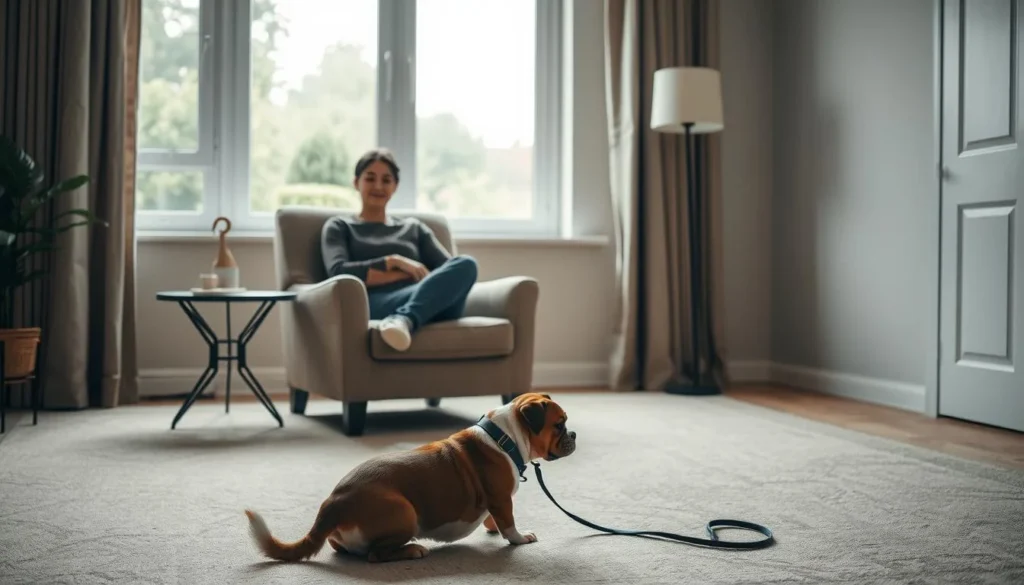
Desensitization and counterconditioning basics
I begin by introducing triggers at a safe distance. This way, the dog can notice without getting stressed. I reward them with treats to change their feelings about the trigger.
I teach basic skills like settle, look, and leave-it first. This gives the dog reliable options. As they get more comfortable, I slowly increase the intensity, always watching their body language and breathing.
How I avoid reinforcing aggression with negative reinforcement
Aggression can seem to work because it creates distance. But I manage the environment to prevent this. If a bark or lunge stops a trigger, it's reinforced. Instead, I reward calm behavior.
I don't use shock, prong collars, or harsh punishment. These methods increase stress and risk. My goal is to reward safe behaviors and teach clear alternatives.
Why consistent responses across family members are essential
Inconsistent reactions confuse the dog and slow progress. I set simple safety rules and practice them with everyone. Kids, partners, and visitors all learn the same cues and limits.
If a household can't follow the plan, I discuss containment or other long-term options. Consistent responses make training faster and reduce relapse.
| Phase | Goal | Key Actions | What to Watch |
|---|---|---|---|
| Management | Reduce incidents | Use gates, leashes, crates; limit exposures | Escapes, unplanned practice of aggression |
| Foundation Skills | Provide alternatives | Teach settle, look, leave-it, reward calm | Inconsistent cue delivery, low-value rewards |
| Desensitization | Lower reactivity | Controlled, graded exposure with treats | Signs of stress, rushed progression |
| Counterconditioning | Change emotion to trigger | Pair trigger with positive outcome repeatedly | Failure to pair at non-reactive intensity |
| Maintenance | Long-term stability | Regular practice, consistent responses family-wide | Drift in routines, new household members |
Training Techniques for Dealing with Aggressive Dogs
I teach step-by-step skills for working with reactive dogs safely and predictably. My main focus is on safety, taking small steps, and using rewards to build trust. I start far from triggers and only get closer if the dog remains calm.
Teaching impulse control starts with three simple cues: settle, look, and leave-it. I teach settle to help the dog relax on command. I teach look to keep the dog's attention on me, not the trigger. I teach leave-it to help the dog let go of temptations calmly.
To shape these behaviors, I use high-value rewards, short sessions, and clear criteria. I never introduce strong triggers until the dog can perform each cue reliably. This method helps with impulse control dogs and reduces sudden lunges.
Trade and release for resource guarding means teaching a dog to give up valued items willingly. I trade a lower-value item for a higher-value treat and then ask for a calm release. I repeat structured exchanges until the dog learns that giving up an item brings something better.
I remove access to prized items when the dog is unsupervised. I practice trade and release dog routines in many locations so the dog generalizes the skill. I reward calm relinquishment more than I reward holding on.
Leash-handling skills are key when dealing with aggressive dogs on walks. I use a secure harness or head halter and practice loose-leash walking in low-distraction zones. I teach a reliable emergency recall and a settle-on-leash cue so the dog can relax when a trigger passes.
I manage distance actively: cross the street, change my route, or adjust walk times to avoid close encounters. These tactics, combined with leash-handling for aggressive dogs, let me train without putting the dog or public at risk.
My training progression uses low-intensity exposures, high-value rewards, and careful threshold management. I use muzzles or halters for safety when recommended by a professional. I record sessions and track progress to guide each next step.
All work centers on preventing fear or escalation. I avoid punitive corrections that can increase defensive aggression. Gradual gains, consistent practice, and clear rewards give the best outcomes for dog aggression training.
Working with Professionals: When to Seek Help
I urge dog owners to get help for dog aggression early. A quick, calm response is key to protect everyone and help the dog. A team approach that includes medical checks, behavior assessments, and training is best.
First, I check with a vet to rule out medical reasons for aggression. Issues like pain or neurologic problems can quickly change behavior. If the case is tough or the dog is dangerous, I refer to a vet behaviorist for help.
For practical skills, I work with positive-reinforcement trainers. They teach the dog to control impulses and handle safely. A vet behaviorist and trainer team up for a plan that includes both medication and training.
What to expect from a behavior assessment dog
A behavior assessment dog involves a professional looking at past incidents and medical records. They find out what triggers the aggression and what type it is. This leads to safety rules, immediate actions, and a plan to help the dog.
Professionals might suggest tests, medication, or a vet behaviorist if the aggression is not clear. I tell owners to expect clear goals and safety plans to help at home.
Red flags bite risk and when to act now
Some signs are a big warning. Aggression towards kids, sudden aggressive behavior, or acting like a predator are urgent. If there have been bites or the dog shakes after biting, it's a serious risk.
Pain, changes in walking, seizures, or acting strange are medical issues that need vet care right away. If you see these, stop training and get a vet check first.
I want to make the future clear. Getting help early stops bad behavior and offers safety options. Sometimes, it's best to find a new home or manage the dog's life to keep everyone safe.
Managing Specific Problems: Conflict Aggression in Dogs and Related Issues
I help owners understand and manage complex triggers that cause conflict aggression in dogs. My goal is to keep everyone safe while finding ways to change. Early prevention, careful handling, and timely vet visits are key to success.
Understanding the behavior
Conflict aggression in dogs often happens when they feel their place is threatened. This can show as stares, stiff postures, or sudden snaps. It can also mean biting family members who get too close to food, toys, or their favorite spots.
Preventive handler education
I teach handlers how to avoid actions that might upset their dogs. Actions like reaching over a resting dog or forcing them into submissive postures can cause problems. Setting clear rules, rewarding calm behavior, and removing access to contested items can help.
Control strategies I use
To manage conflict aggression, I focus on routines and safe interactions. Training focuses on voluntary actions, not force. I teach families how to approach their dogs safely, how to create distance in tense moments, and how to use barriers.
Redirected aggression
Redirected aggression occurs when a dog's excitement from one thing is directed at someone or something else. Owners might see a dog alarmed by a passing animal then attack a nearby person. To prevent this, I advise avoiding interference during excitement and using barriers to separate individuals until calm.
Frustration-elicited responses
When a dog can't get what it wants, it might bite the leash, gate, or handler. I help by making restraint situations less stressful and teaching calm behaviors like "settle" and "leave it." Changing walk routes and managing visual triggers can also help.
Pain-elicited aggression
Any sudden change in behavior should prompt a vet visit. Pain-elicited aggression can come from physical issues like orthopedic problems or ear infections. I work with vets to rule out or treat physical causes before focusing on behavior.
Practical steps I recommend
- Identify triggers and set plans to manage them.
- Teach safe handling: approach on a diagonal, offer treats, avoid looming over the dog.
- Use barriers and strategic exits to reduce redirected aggression risks during incidents.
- Implement short, frequent training sessions to build calm coping skills.
- Schedule veterinary checks when aggression patterns change or worsen.
When to choose medical versus behavioral treatment
I decide based on each case. If there's a clear medical issue, we focus on that first. Without a clear cause, we use behavior plans and handler education for long-term change. My goal is to protect both families and pets.
Long-term Prevention and Lifestyle Adjustments
I focus on practical steps to keep families and dogs safe. Long-term prevention of dog aggression involves training, management, and realistic goals. Small daily routines build up over time.
Socialization strategies dogs need to be controlled and predictable. I plan ongoing, low-intensity exposures to people and other animals. These end calmly. I start below the dog’s threshold, reward calm reactions, and increase intensity slowly.
This approach reduces fear-based and novelty reactions. It helps during the sensitive period between one and three years for some dogs.
For home life, I recommend clear environmental changes. Use baby gates, crates, separate feeding zones, and secure fencing. Rotate toys and remove high-value items when you cannot supervise. These adjustments reduce triggers and lower the chances of guarding or escalation.
Monitoring progress dog behavior means keeping a simple incident log. Share it with your behaviorist or trainer. I track frequency, context, and who was present. I review trends monthly and adjust safety rules when calm behavior is consistent across settings.
Progress is gradual; I relax rules only after repeated successes.
I stress honest risk assessment. Some triggers may need permanent management. If household members cannot follow a safety plan, discuss alternatives with professionals. Your plan may include medical review, training, and steady management to achieve long-term prevention dog aggression.
- Plan exposures that are short, calm, and reward-based to support socialization strategies dogs.
- Use gates, crates, and separate zones so environmental adjustments reduce triggers at home.
- Keep records and review them frequently as part of monitoring progress dog behavior.
My approach blends realistic management, skillful training, medical checks when needed, and open communication. This mix gives the best chance for sustained improvement and safer daily life.
Conclusion
Dog aggression is a complex issue with many causes. But, it can be managed when approached correctly. The first steps are a correct diagnosis, preventing further incidents, and managing safety first.
Managing dog aggression means consistent, reward-based behavior modification. It also means having realistic expectations. I suggest involving veterinarians and veterinary behaviorists early to rule out medical causes.
They can also consider medication-assisted plans when needed. Certified trainers and applied animal behaviorists teach desensitization and counterconditioning. They give families the skills they need for daily life.
The prognosis for dog aggression varies. Many dogs improve substantially, while some need permanent management strategies or rehoming. There will always be some bite risk.
Continuous monitoring, clear household rules, and uniform responses from everyone are essential. I encourage you to document incidents carefully. Prioritize safety and reach out to qualified professionals early.
This gives your dog the best chance for a positive outcome. It also protects your household and community.

